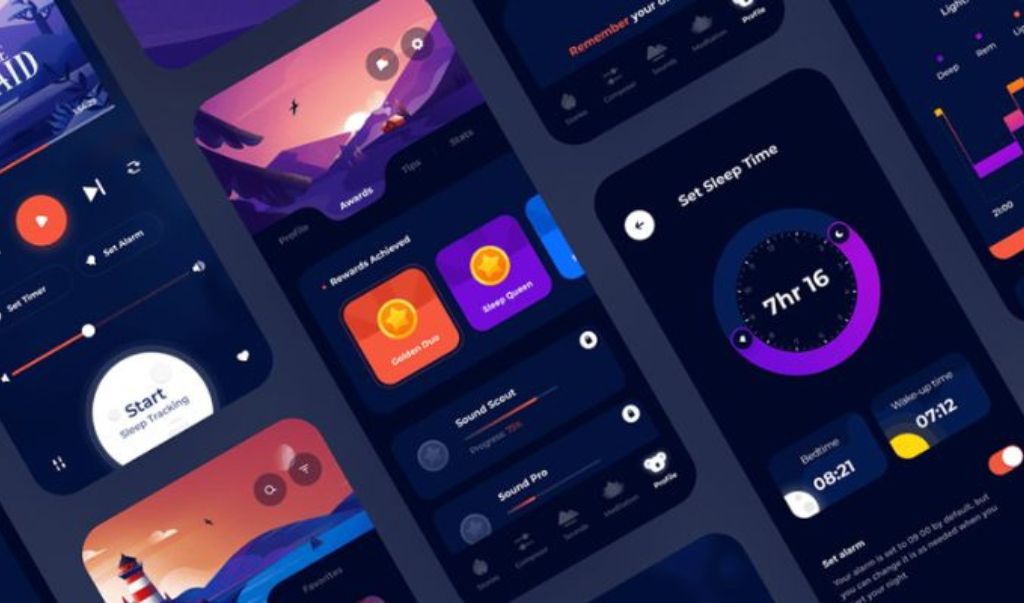How to Enhance Load Speed in UI/UX Design

User Interface (UI) and User Experience (UX) design serves both visual appeal as well as handling system performance and operation effectiveness. UI/UX design achievement depends heavily on load speed performance. Web page and app users expect data to load within two seconds so maximizing load speed represents the essential factor for user retention and interface usability. The blog examines speed optimization methods in UI/UX development by discussing main design principles together with available tools and expert approaches as taught in the UI UX Designer Course in Chennai to achieve high performance.
Introduction to Load Speed in UI/UX Design
Website page and application interface load speed indicates the amount of time needed for complete interactive readiness. Load speed generates two major effects on user experience by affecting both satisfaction levels and the number of visitors who leave immediately while also modifying search engine rankings. When UX/UI design includes quick loading speeds it will elevate an effective design but slow performance leads to user irritation until they exit. The process of enhancing load speed requires organizational principles that need integration throughout design development workflows. The following approach shows developers and designers how to improve UI/UX project load speed.
1. Optimize Images and Media Files
Page loading speed is mainly determined by images and media files which commonly occupy most webpage space. The following steps should be adopted to boost webpage load speed:
- Users can apply tools for decreasing file sizes while maintaining image excellence.
- Choose WebP over JPEG or PNG because it provides better quality compression than alternative formats.
- Images and videos should be implemented using Lazy Loading which automatically activates them when they become visible onscreen to lower initial load periods.
2. Minimize HTTP Requests
Every webpage element that needs to retrieve information through an HTTP request. Page loading speed depends on the number of requests sent to the server. Page loading time increases with each HTTP request that needs to be completed.
- One file should contain all CSS and JavaScript resources in order to decrease the number of requests made.
- CSS Sprites helps to combine smaller images into single file then applies CSS rules for part selection.
- Use an audit tool to detect unused code within your CSS and JavaScript files then fully remove them for improved operation efficiency.
Fewer HTTP requests translate to faster load times and better user experiences.
3. Implement Responsive and Adaptive Design
Comparable to other layouts a responsive approach along with adaptive mechanisms allows content to transition between different equipment and screen dimensions. The adaptability feature boosts both usability and loading speed performance.
- Media queries facilitate the delivery of lighter versions of content to mobile devices.
- SVGs should replace raster images because they maintain scalability while remaining compact so they work best in responsive design projects.
- Set specified breakpoints that allow content to load efficiently on every device screen.
Users get uniform content through responsive design technology which improves server performance.
4. Leverage Content Delivery Networks (CDNs)
A server system placed in several distinct places constitutes this network. The server network distributes content at higher speeds by providing content through neighboring servers to users.
- CDN technology shortens the geographic distance between users and servers thus it decreases page loading time.
- Quick delivery of images videos and CSS files is enabled by storing static content in CDN servers through cache static content.
- The distributed server network of CDNs operates with high scalability through its capability to manage big traffic volumes. This results in consistent performance levels.
Platform owners who intend to serve users worldwide gain substantial benefits from employing CDN technology.
5. Prioritize Critical Rendering Path
The browser follows a specific process to convert web content into visual elements on the screen which constitutes this path. The enhancement of load speed becomes achievable when this path receives priority.
- Non-essential JavaScript files should have the async or defer attributes to delay their loading.
- The practice of placing essential CSS code that affects the first section visible by the user directly in the HTML structure offers faster rendering.
- The loading process becomes faster when you either optimize or delay heavy scripts and CSS files that hinder the page initialization.
The critical rendering path optimization leads users to experience the most important page content instantly after page load.
Also Read: Titaniuminvest.com
6. Enable Gzip Compression
The server sends compressed files to user browsers that occupy less space. The compression technique results in significant improvement of load speed levels.
- Web servers enable file compression of HTML CSS and JavaScript text which yields reductions of up to 70% in file size.
- Faster transmission of data across the network occurs due to bandwidth usage enhancement capabilities.
Gzip compression receives support from both Nginx and Apache and other current web servers.
7. Optimize Fonts for Performance
The use of custom fonts boosts visual appeal yet makes pages load at a reduced speed. To optimize font performance:
- The utilization of system fonts helps avoid download time as they rely on the system rather than external resources.
- The number of characters included in your subset selection helps decrease the file size.
- Making fonts load faster is possible through the link rel=”preload” directive.
Doing performance optimization as well as typography allows users to have a hassle-free experience that remains visually pleasing.
Read More: Invest1Now.com
8. Regularly Test and Monitor Performance
The optimization of load speed continues across an ongoing cycle. Performance bottlenecks should be found by using tools which include Google PageSpeed Insights, Lighthouse, and GTmetrix to continuously monitor performance behavior.
- Periodic Speed Audits should be conducted to discover performance problems which require resolution.
- Conduct User Testing: Gather insights on how load speed impacts user experience.
- Continuous load time measurement should use tools such as New Relic or Pingdom.
The assessment process maintains a high level of optimization for your UI/UX design by accommodating content and feature transformations over time.
The essential role of speedy loads in design comes from proper Graphic Design Classes in Chennai training because it enables efficient and user-friendly digital connection with customers. Fastening interface delivery occurs through image optimization techniques while reducing requests with CDNs along with early emphasis on performance in development.
Also visit: stockx.com
The best way to enhance load speed derives from designers working together with developers. Their combined efforts will produce performances which satisfy both user needs and business requirements.
Author Bio:
This is Aryan, I am a professional SEO Expert & Write for us technology blog and submit a guest post on different platforms- Technooweb provides a good opportunity for content writers to submit guest posts on our website. We frequently highlight and tend to showcase guests.






